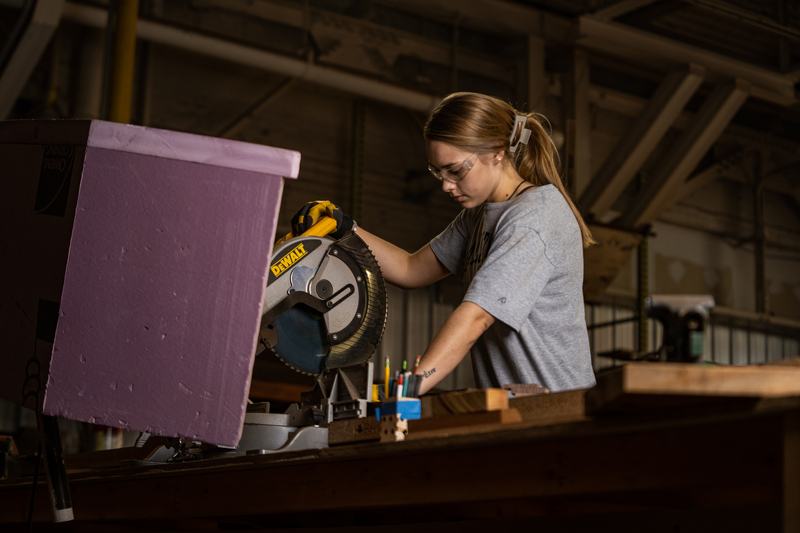Overview
iMADE Projects in Muncie
The world is interconnected with ideas transferring across distant regions in real time. In the realm of immediate connectivity, a new ethic has emerged—an ethic that privileges sharing of information and collaboration with a diverse team. As researchers in the arts and architecture, our responsibility in this global social realm is critical, and the impact we make on local conditions is paramount. The mantra: “connect globally, make locally” addresses this end. We believe in making a difference locally while remaining deeply connected to the global exchange of knowledge. These applied research seminar and studios wil gather diverse teams of knowledge, with strategic industry partners and develop solutions in concert with community partnerships. Each student seminar project wil test knowledge through a real need within our community, while simultaneously examining the potential for innovation as new design products emerge.
The Midwest of the United States has been a productive center of manufacturing over the last decade. Making things has defined the culture of the Midwest for over century. As Richard Longworth points out in his book Caught in the Middle: America’s Heartland in the Age of Globalism: “Half of everything made in America was made in the Midwest,” and “the Midwest reigned as the Silicon Va ley of the industrial era. Innovation flew from fertile imaginations and invented a new economy.” iMADE design-through-production projects aim directly at engaging our manufacturing energy (and heritage) in service to real evolving needs within the community.
The iMADE projects involve three critical components of the pedagogy. First, iMADE projects are student-driven and directed outside of the typical classroom setting, enabling the students with a sense of responsibility and professionalism, as we l as ownership of tangible project-specific goals and educational opportunities. Students organize everything from partner meetings and goals, to project development and timelines for production and installation. Second, iMADE community and regional industry partnerships are central to the work. The students solve real problems and realize full-scale design work that adds value to Muncie. These projects draw upon the resources and knowledge through synergies derived from students working directly with local industry partners to realize and manufacture this work. Both partners benefit from this exchange. Third, iMADE projects involve the direct application of a designthrough-production methodology enabling students to prototype and gain direct feedback along the way from real-world feedback by deploying critical thinking skills to problems identified by local and Indiana-specific partnerships.
iMade students begin the semester by revisiting work that demonstrates material strategies and assembly details that came from a prior semester. This strategy is very important, pedagogically, for the students as it helps them begin with an understanding of production and assembly realities for specific materials and the production of existing partnerships. This assembly influences design thinking for their own new design work to fo low. For instance, we may begin by assembling a bench or trash can that has already been designed by previous iMade students, which helps new iMade students learn about how to work with hardwood and metal joinery strategies.
iMADE projects are entrepreneurial, as they focus on creative projects performed under the guidance of a faculty advisor and in collaboration with partners. Students are encouraged to consider the applied research potentials for projects as they are the central points of contact for industry collaboration. As such, students will gain real-world application skills to directly realize their design and fabrication ideas and feedback from industry input in the development process.
In the fall 2022 semester, two sections worked on iMADE projects. A fabrication studio made items such as coasters, tables, and follies to decorate MADJAX. Coasters were sold to raise money to fund maker scholarships for MADJAX workshops. In a seminar class, students designed an "art park" on the south side of Muncie, planted trees on the site as part of the 10,000 tree initiative, and fabricated pieces to hold mural walls.
